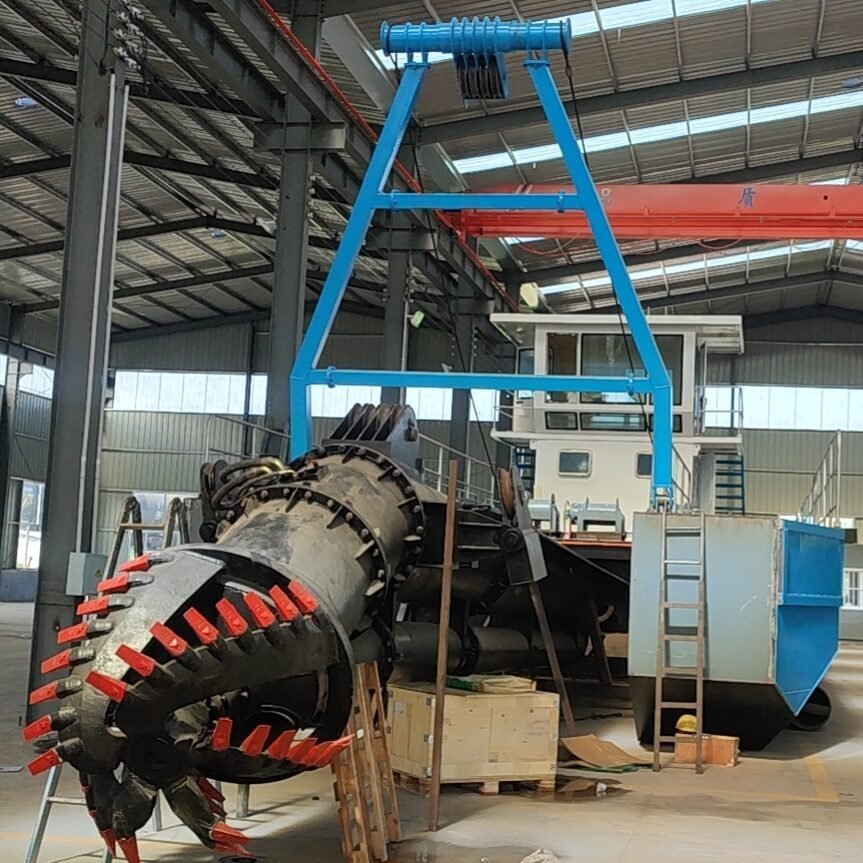
Keywords: Land Reclamation, Dredgers, Dredging for Land Reclamation
Introduction to Land Reclamation and Dredging
Land reclamation is the process of creating new land from bodies of water, such as oceans, rivers, and lakes. This process is often used to expand urban areas, create new industrial zones, or develop agricultural land. Dredgers play a vital role in land reclamation projects by removing sediment from one area and depositing it in another to build up new land. This article explores the role of dredgers in land reclamation, highlighting the techniques and equipment used in these large-scale projects.
The Importance of Land Reclamation
Land reclamation is an essential tool for addressing land scarcity, particularly in densely populated regions or areas prone to flooding. By reclaiming land from the sea or other water bodies, governments and developers can create new spaces for housing, industry, and infrastructure. Some of the world’s most iconic cities, such as Singapore and Dubai, have used land reclamation to expand their territories and support economic growth.
- Urban Expansion: In many coastal cities, land reclamation is used to create new urban areas, providing space for residential, commercial, and recreational developments. This is particularly important in cities with limited land availability, where expansion is necessary to accommodate growing populations.
- Industrial and Port Development: Land reclamation is also used to develop industrial zones and expand port facilities. By creating new land for factories, warehouses, and shipping terminals, countries can enhance their economic competitiveness and support trade.
- Agricultural Land Development: In some regions, land reclamation is used to create new agricultural land. By converting wetlands or shallow coastal areas into arable land, countries can increase food production and improve food security.
Dredging Techniques for Land Reclamation
Dredgers are the primary tools used in land reclamation projects. The choice of dredging technique depends on the specific requirements of the project, including the type of sediment, water depth, and desired land elevation.
- Hydraulic Reclamation: Hydraulic reclamation is the most common technique used in land reclamation. It involves the use of dredgers to suction sediment from the seabed and pump it onto the reclamation site. The sediment is mixed with water to form a slurry, which is then deposited in layers to build up the new land. Once the sediment settles, the water is drained, and the land is compacted to achieve the desired elevation.
- Cutter Suction Dredgers (CSDs): CSDs are widely used in hydraulic reclamation projects. These dredgers are equipped with a rotating cutter head that breaks up sediment before it is suctioned and pumped to the reclamation site. CSDs are particularly effective for dredging hard or compacted materials, such as clay, gravel, or rock.
- Trailing Suction Hopper Dredgers (TSHDs): TSHDs are also commonly used in land reclamation projects. These dredgers suction sediment from the seabed and store it in onboard hoppers. The material is then transported to the reclamation site, where it is deposited to build up the new land. TSHDs are ideal for projects involving loose or soft materials, such as sand and silt.
Environmental and Engineering Challenges
Land reclamation projects present a range of environmental and engineering challenges that must be carefully managed to ensure success and sustainability.
- Sediment Management: The quality and composition of the sediment used in land reclamation are critical to the stability and longevity of the reclaimed land. Operators must carefully select and manage sediment to ensure that it provides a solid foundation for construction and resists erosion over time.
- Environmental Impact: Land reclamation can have significant environmental impacts, including habitat destruction, changes in water flow, and loss of biodiversity. To minimize these impacts, it is important to conduct thorough environmental assessments and implement mitigation measures, such as creating artificial reefs or restoring nearby habitats.
- Engineering Solutions: The success of land reclamation projects depends on the use of advanced engineering solutions to address challenges such as soil compaction, drainage, and settlement. Engineers must design and implement systems to manage water flow, prevent erosion, and ensure the stability of the reclaimed land.
Case Studies of Land Reclamation Projects
Several high-profile land reclamation projects around the world demonstrate the vital role of dredgers in creating new land and supporting economic development.
- Palm Jumeirah, Dubai: One of the most iconic land reclamation projects, Palm Jumeirah in Dubai, was constructed using millions of cubic meters of sand and rock dredged from the seabed. The project involved the use of TSHDs to transport and deposit the material, creating a massive artificial island that is now home to luxury hotels, residences, and entertainment venues.
- Marina Bay, Singapore: Singapore’s Marina Bay area was created through extensive land reclamation, expanding the city’s downtown area and providing space for commercial, residential, and recreational developments. CSDs and TSHDs played a key role in the project, dredging and transporting sediment to build up the new land.
- Port of Rotterdam Expansion, Netherlands: The expansion of the Port of Rotterdam, one of the world’s largest ports, involved extensive land reclamation to create new industrial and logistics facilities. Dredgers were used to deepen shipping channels and deposit the dredged material onshore, creating new land for port expansion.
Conclusion: The Future of Land Reclamation and Dredging
Dredgers will continue to play a crucial role in land reclamation projects around the world as the demand for new land increases. By adopting advanced dredging techniques and addressing environmental and engineering challenges, operators can create new land that supports economic growth while minimizing environmental impact. As technology advances, the future of land reclamation promises even greater possibilities for sustainable development and urban expansion.

No responses yet